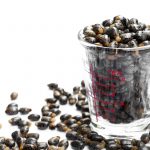Naturopathic Management of Coagulation in Chronic Atrial Fibrillation – Part 2
Martin Milner, N.D.
Targeting Levels of Natural Anticoagulation
We mentioned in last month’s issue that patients using natural anticoagulants needed to be targeted in the laboratory for optimal platelet aggregation inhibition and fibrin degradation. There are patients taking Warfarin who are wanting to augment Warfarin therapy and other patients who, either due to side effects or intolerance to Warfarin therapy, are using natural medicine as an alternative.
Whether a patient is or is not taking Warfarin, bleeding times, indicative of platelet aggregation need to be targeted to approximately six-to-eight minutes (reference range of two-to-ten minutes). Additionally, fibrinogen levels need to be targeted to an optimal 250mg/dL of whole blood with a reference range of 215-519mg/dL. When these optimal numbers are achieved, chronic coagulation risk management has been optimized in all physiological parameters. Most patients on Warfarin have bleeding times at three-to-five rather than six-to-eight minutes and also have fibrinogen levels well over 250mg/dL. Smoking raises fibrinogen and some smokers have levels in the 600s. Warfarin has been shown to inhibit fibrinolysis in some literature, making it more difficult to achieve the target level of 250mg/dL for fibrinogen.
Essential Nutrients in the Treatment of Chronic Coagulation Disorders
It is both fundamental to naturopathic medicine and a basic treatment guideline to first use essential nutrients to affect coagulation markers before selecting specialty products. An essential nutrient is defined as a nutrient our body cannot biosynthesize that is essential for a range of biochemical and physiological processes. From a hierarchal perspective, essential nutrients would include first and foremost oxygen and water. Calories are also essential and are macro nutritional subclassifed into proteins, carbohydrates and fats. Proteins are cleaved into essential amino acids, fats are degraded into essential fatty acids (free fatty acids and glycerol), and carbohydrates are broken down into their simplest unit of monosaccharides and chained polysaccharides (although from a strict perspective, carbohydrates are not essential because we can make all of them from proteins). Vitamins, minerals, trace minerals as well as antioxidants and phytonutrients are also essential. The main class of essential nutrients that have a significant impact on inhibiting platelet aggregation and stimulating some fibrinolysis are essential fatty acids. Due to their “essential” nature it makes the most sense to first review protocols for the use of essential fatty acids in the management of chronic coagulation disorders.
Essential Fatty Acids (EFAs) as Essential Nutrients in Chronic Coagulation Management
In reviewing most of the studies using EFAs in the management of hypercholesterolemia, cognitive impairment, attention deficit, chronic inflammation and chronic coagulation, most doses start at a minimum of 6 grams. In clinical practice we begin our protocols using fish oil as a source of omega-3 fatty acids or a blend of fish, flax and borage oils as a source of blended omega-3 and omega-6 fatty acids. We contact the manufacturer and verify that toxicity assays for both heavy metals and chemical contamination is performed on every batch before prescribing, and carefully review the manufacturing technique and formulation to insure the minimizing of oxidation of the fatty acids in the formula (antioxidant added to the formula and/or nitrogen infused into the large softgel cap before sealing).
Our dosing protocols begin at 2gm tid with meals for 100 lb. individuals and increase by 3 grams daily for every 100 lbs. This starting dose is reassessed with monthly bleeding times and fibrinogen levels. If our target is not reached, we increase the dose up to a maximum of 6gm tid. This dose is maintained on an ongoing basis. If dose elevations have not significantly altered target ranges we will lower the dose back to 2 grams TID with meals and move on to adding Nattokinase to the protocol.
Nattokinase – a potent and safe thrombolytic, fibrinolytic and platelet aggregation inhibitor
There is a broad range of quality in the fibrinolytic activity measured in fibrinolytic units (FU) among Nattokinase products in the industry. Some products contain vitamin K naturally occurring in Natto and others do not. Using a product higher in fibrinolytic units (FU) and lower in vitamin K is best in order to allow for increasing the dose of Nattokinase without vitamin K levels being raised. In my clinical experience the softgel in an oil base is better absorbed and more effective in reaching target lab levels than the dry capsule.
My starting protocol begins with one softgel bid on an empty stomach an hour away from meals for a 100 lb. individual. I will increase this dose based on body weight up to 2, 3, or 4 bid until targeted blood levels of bleeding time and fibrinogen levels are achieved after 30 days of medication. Remember, these patients are all already taking 6-12 grams or even more EFAs and we are now adding Nattokinase to further inhibit their chronic coagulation mechanisms.
Other Natural Thrombolytic, Fibrinolytic and Platelet Aggregation Inhibitor Medicines
Beware! Your patient may be taking other nutraceuticals that have an effect on chronic coagulation. If this is the case, their dose needs to be consistent in combination with the Warfarin they are taking and/or with the EFAs and Nattokinase you are prescribing. A partial list of the primary nutraceuticals that can interact with Warfarin or your EFA and Nattokinase protocols, especially when administered at high doses include vitamin C, vitamin E, vitamin K, any omega-3 or omega-6 fatty acid, bromelain, garlic, ginkgo and Panax ginseng. I do not consider any of these nutrients to be contraindicated with Warfarin, EFA or Nattokinase therapy. They do however need to be taken regularly, daily and consistently, or not be taken at all. With consistency you can easily monitor the effect of these other nutrients on Warfarin clotting times and INR, as well as platelet aggregation bleeding times and fibrinogen levels. Many conventional Warfarin labs provide a list of nutraceuticals they consider to be direct contraindications with Warfarin simply because they may interact with Warfarin and require lowering its dose. This is not a true contraindication, it is a possible drug-nutrient interaction that is easily managed with consistency of dosing and proper blood monitoring of INR, bleeding times and fibrinogen levels.
Stay tuned for the next part of this series when we will be continuing our discussion with additional protocols using natural therapeutics such as bromelain, Ginkgo biloba and others to aid in the management of chronic coagulation disorders.
Dr. Milner’s article titled Natto and Its Active Ingredient Nattokinase: A Potent and Safe Thrombolytic Agent, was published in the June 2002 issue of Alternative and Complementary Therapy, pp.157-164. A reprint of this article is available as a pdf file online at his web site www.cnm-inc.com.
 Dr. Martin Milner received his ND in 1983 from National Colege of Naturopathic Medicine (NCNM) Portland, Oregon. He has remained at his alma mater for the past 18 years as Professor of Cardiocascular and Pulmonary Medicine. Dr. Milner is also the CEO and Medical Director of hte Center for Natural Medicine (CNM), Inc. Established in 1991, CNM is the first and one of the largest ongoing, integrated healthcare facilities in the Northwest. Dr. Milner is well published with texts, medical journal articles and studies in endocrinology, cardiology, pulmonology, oncology, and environmental medicine. Dr. Milner has just published his new book, Menopause Revolution: Smashing the HRT Myth- Alternatives to Maufactured Drug Therapy that is available through www.agorahealth-books.com Contact Dr. Milner at [email protected].
Dr. Martin Milner received his ND in 1983 from National Colege of Naturopathic Medicine (NCNM) Portland, Oregon. He has remained at his alma mater for the past 18 years as Professor of Cardiocascular and Pulmonary Medicine. Dr. Milner is also the CEO and Medical Director of hte Center for Natural Medicine (CNM), Inc. Established in 1991, CNM is the first and one of the largest ongoing, integrated healthcare facilities in the Northwest. Dr. Milner is well published with texts, medical journal articles and studies in endocrinology, cardiology, pulmonology, oncology, and environmental medicine. Dr. Milner has just published his new book, Menopause Revolution: Smashing the HRT Myth- Alternatives to Maufactured Drug Therapy that is available through www.agorahealth-books.com Contact Dr. Milner at [email protected].







